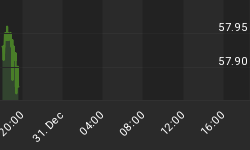With European debt markets getting little relief thus far from the Ireland bailout, we need to keep a continued eye on the U.S. dollar. A weaker U.S. dollar tends to provide tailwinds for stocks, commodities, gold, and silver. Therefore, a longer-than-expected rally in the greenback may provide headwinds for these assets, with gold being the possible exception in the near-term.
We outlined some concerns relative to a dollar rally and risk aversion on November 10th. With the Federal Reserve embarking on an aggressive money printing campaign (a.k.a. quantitative easing or QE), it seemed unlikely the dollar would muster the strength for a 7% rally, but that is exactly what has happened.
We will continue to have competing forces in the currency markets in the form of debt problems in Europe vs. Fed policy in the United States. Fundamental drivers related to a weaker dollar and higher assets prices are outlined on this QE resources page. To find the competing bullish forces related to the dollar, you need to look no further than Portugal, Spain, and Italy over the next few months.
There are four relatively easy ways to track the progress of the dollar and risk aversion. The first is to monitor the dollar's behavior near its 200-day moving average (shown below).

The second way to monitor the health of the dollar's current rally is to evaluate the reaction of market participants as the U.S. Dollar Index trades between 80.89 and 83.06. These levels have coincided with significant trend reversals in the past (see arrows below). If the buck's rally is to be short-lived, then the horizontal blue band shown below is a logical area for the bears to regain control.

The third way to keep an eye on the buck is to watch the 10-week moving average (MA). Notice in the chart below how significant rallies in the dollar were accompanied by a turn up in 10-week MA (think blue line). The current turn would be more significant if it remains in place at the end of the week.

The forth method to take the dollar's temperature is to look for a zero cross of the Rate of Change (ROC) indicator on a weekly chart. Past rallies of any significance and duration have been accompanied by a bullish cross of the zero line in ROC. A cross has not taken place yet, which means some continued skepticism is warranted as to the sustainability of the dollar's current rally.

For now, the bulls remain in control of the dollar and the bears remain in control of the euro. In terms of equities, Stock Market Levels to Watch, remains relevant in the face of continued weakness in risk assets.
















